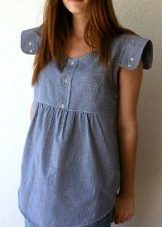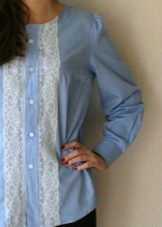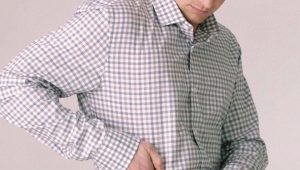How to make a women's shirt out of a men's shirt: ideas

If you need to update your wardrobe, and in this case with a new shirt, it is not necessary to run to the store. It is enough to review the wardrobe of a husband, boyfriend or son. We guarantee that there will be at least one shirt that you can remake with your own hands.
See below for details.
Option number 1
Step one
Put on a shirt and mark on it the place where your shoulders end. For this, special chalk is suitable, or if there is none at home, ordinary soap will do.
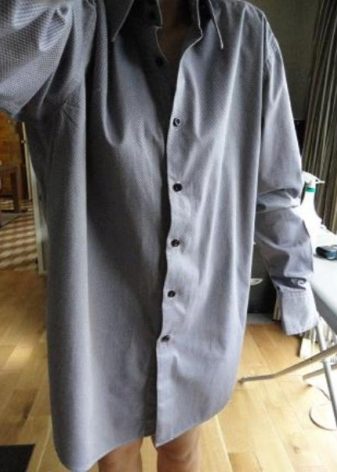
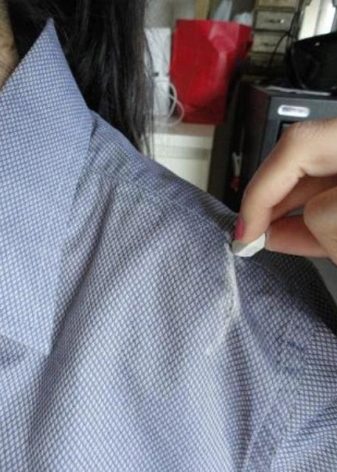
We take off our shirt. We draw the necessary bend from the shoulder to the armpit. Next, fold the shirt in half and cut along the marked line.
Turn the shirt inside out and turn both sleeves inside out. Fold so that the holes for the buttons on the cuff are at the bottom. We pin the sleeves back, we pin them with pins. As a result, you will find a hole in the armpit area, since the collar of the sleeve has become smaller than it was originally.
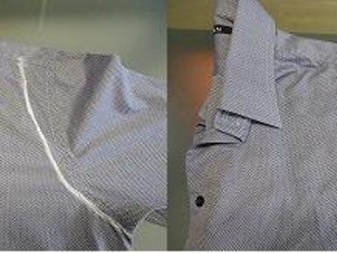
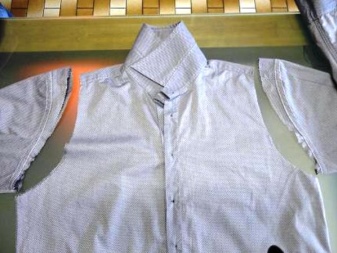
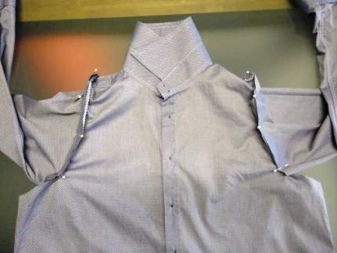
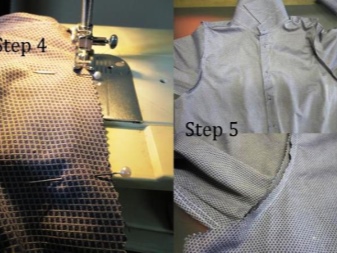
It is important that the hole is kept as small as possible. After that, sew the sleeves to the shirt.
step two
We make chest tucks, since this is what distinguishes a men's shirt from a woman's. Turn the shirt inside out again. We draw a curved line, starting from the center of the chest and to the side.
It may turn out that the intended tuck goes into the pocket of the shirt, in which case we make it either lower, or completely remove the pocket, which we can add at the end. Draw a straight line using a ruler.We transfer the tuck to the other side, folding the shirt exactly in half.
We pin the darts with pins. We sew directly under the drawn line. How much lower is up to you.
There is a little secret, the smaller the size of the chest, the closer to the line you need to scribble.
We turn the right side of the shirt inside out, if everything suits, we do the same with the left side.

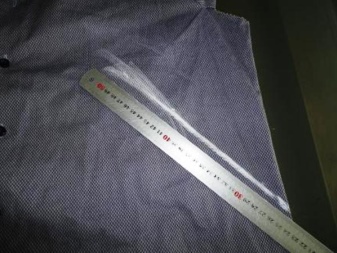
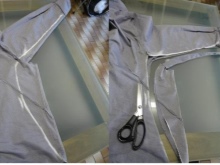
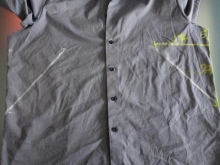
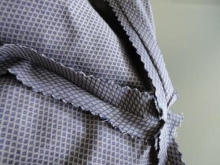
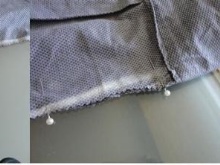
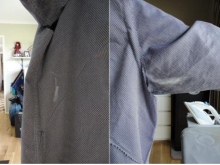

Step Three
We turn the product inside out, mark the waist line and the back of the hand. We draw a straight, slightly curved line from the armhole to the cuff, we do the same actions from the armhole to the bottom of the shirt. The widest part of the bend will be the mark at waist level. We cut off the excess.
Do not worry about the fact that the back will be longer than the shelf, you can hem it, or leave it like that. It all depends on your preferences. We grind.
You can also shorten the sleeves, making the summer version, or leave the classic one. If you chose an initially long or very long shirt, then you can easily wear it as a tunic or as a dress.
We looked at a classic shirt model that can be combined with a jacket and trousers, adhering to a strictly business dress code, and with jeans, for an informal setting.
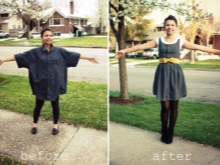

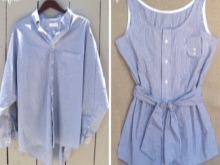
Option number 2
Next, consider the option of creating a summer women's shirt with frills, redoing the men's flannel.
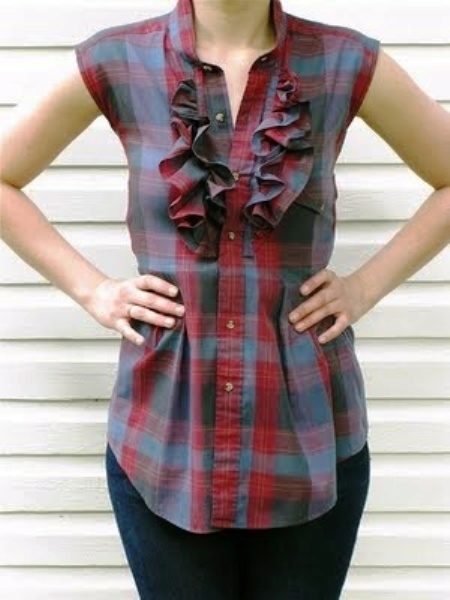
Initially, we find an ordinary men's flannel shirt. The shirt needs to be a few sizes larger. In this case, the more the better, since we will make frills from the leftovers.
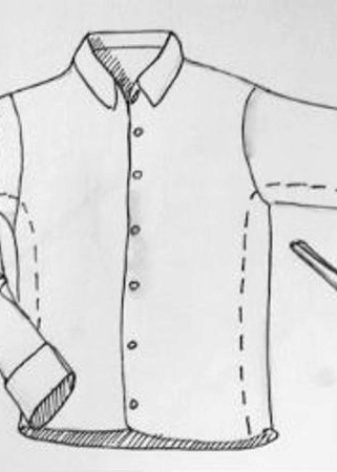
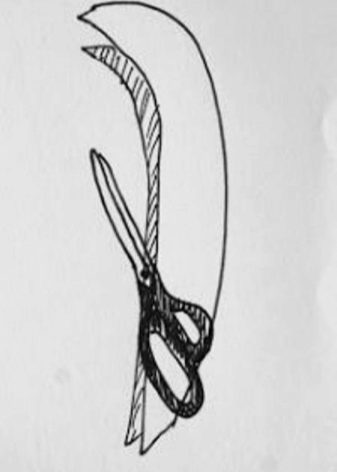
Cut off the excess along the line, which is marked with a dotted line in the picture. As a result, four small pieces of fabric remain, from which we will make frills. They will be located along the bar. Due to the density of the fabric, the frills will "stand" and look good.
How to make frills? From the remaining fabric, cut even strips. The volume and length of the frills depends on the amount of remaining fabric, or on your preferences. The classic length should be 1.5 times longer than the sewing line.
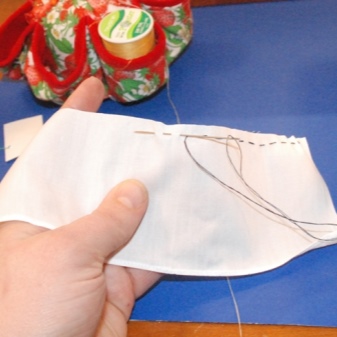
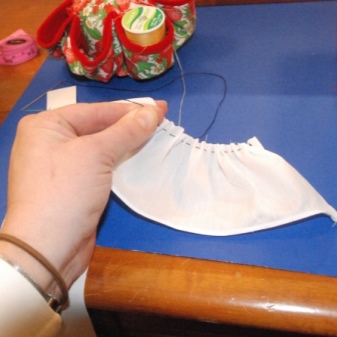
From experience, the easiest way to assemble the fabric evenly and beautifully into a frill is as follows: we make the first line next to the edge of the fabric, at a distance of about 0.3 mm. Further, the second, at a distance from the first 0.5 mm. It is important that the lines are parallel and in no case intersect, otherwise nothing will come of it. We make bartacks only at the beginning of both the first and second lines. At the end of the lines, leave the threads, tie them.
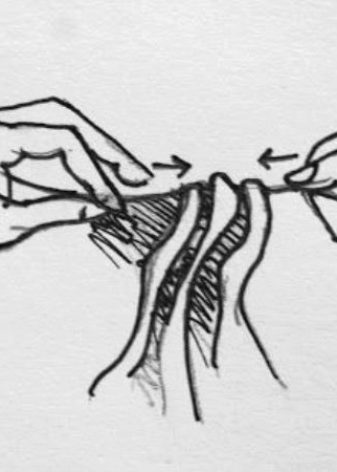

Gently begin to pull the threads on one side, on the other hand, “pushing” the fabric further along the seams to the knot itself. The closer to the knot, the more voluminous the frill. The main thing is to collect uniform beams.
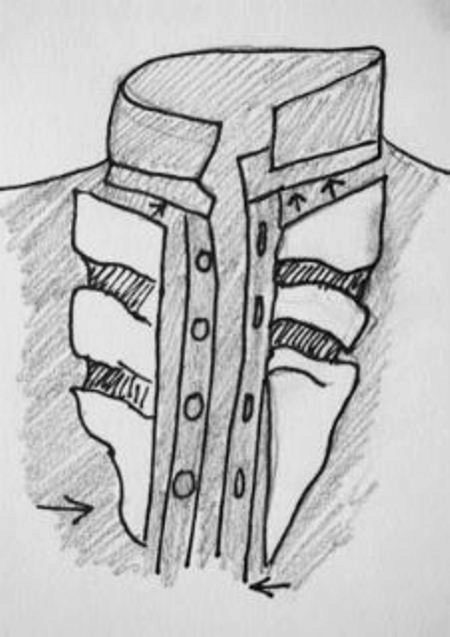
It is advisable to take dense threads for this method of creating frills so that they do not break when pulled, otherwise you will have to start all over again. To make a frilled shirt last longer, double stitch it together. To evenly distribute the folds, mark the middle on the fabric. So you will better understand which side has more folds and which has less. When sewing a frill with a front, straighten the parts that will be on the side seam so that the fabric lies flat and all the frills are sewn.
The result is a beautiful summer shirt embellished with frills.
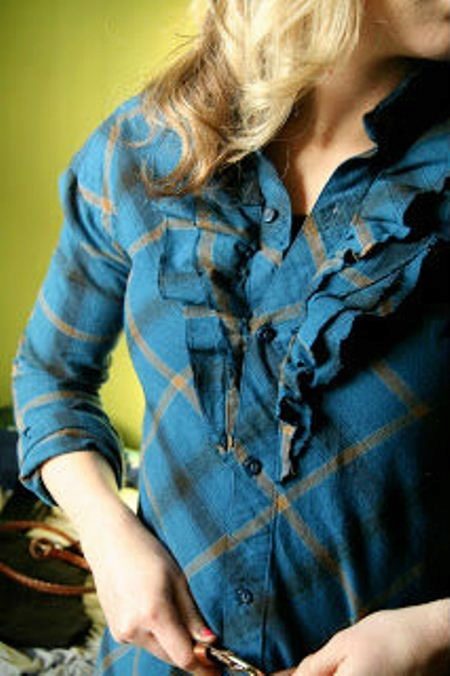
Option number 3
Knowing how frills are made correctly, you can sew them anywhere. In the previous method, they were located on the shelf along with the bar, and in this one we connect them instead of sleeves. The process of fitting and modifying the shirt itself remains the same. Except for the fact that now it is necessary to rip off the sleeves and redo the collar.At will, we make a cutout of any shape you like, or we make a stand-up collar.
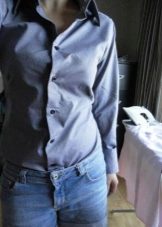
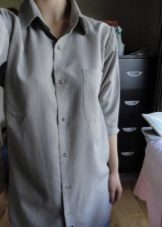
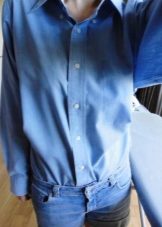

How to cut a stand-up collar
Making patterns of a crow is simple. To begin with, we measure the girth of the neck and draw a rectangle ABCD. The length of the segments AB and VG \u003d the length of the neckline.
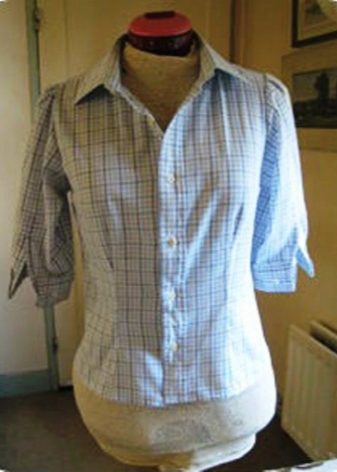
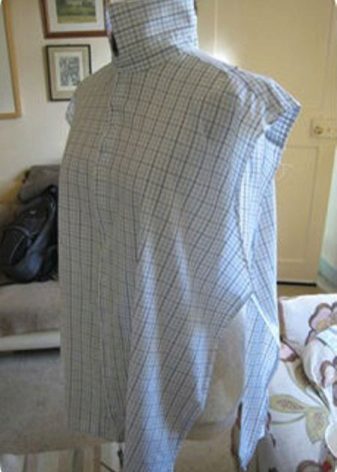
We determine the height of the rack (AB) ourselves at will, as a rule, it is taken from two to four centimeters. From points BV we set aside 1 cm upwards. From point B we lay aside 0.5 cm to the right. We draw a smooth line through points AB and VG, this will be the collar line. Important! We must strengthen the inner collar with thermal fabric, otherwise the shape and the collar itself will not be ideal. It is also worth noting that the inner collar is cut without seam allowances.
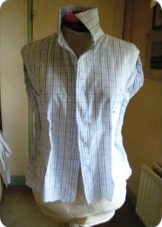

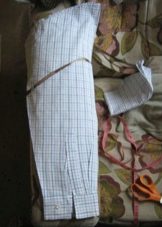
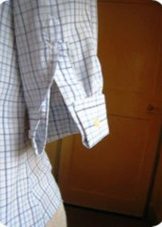
We made a women's blouse from a men's shirt, removing the sleeves with a collar, narrowing the silhouette and obligatory chest darts.
This model of blouse is combined with both a pencil skirt and trousers. Also, the bow depends on the fabric that you took as a basis.


